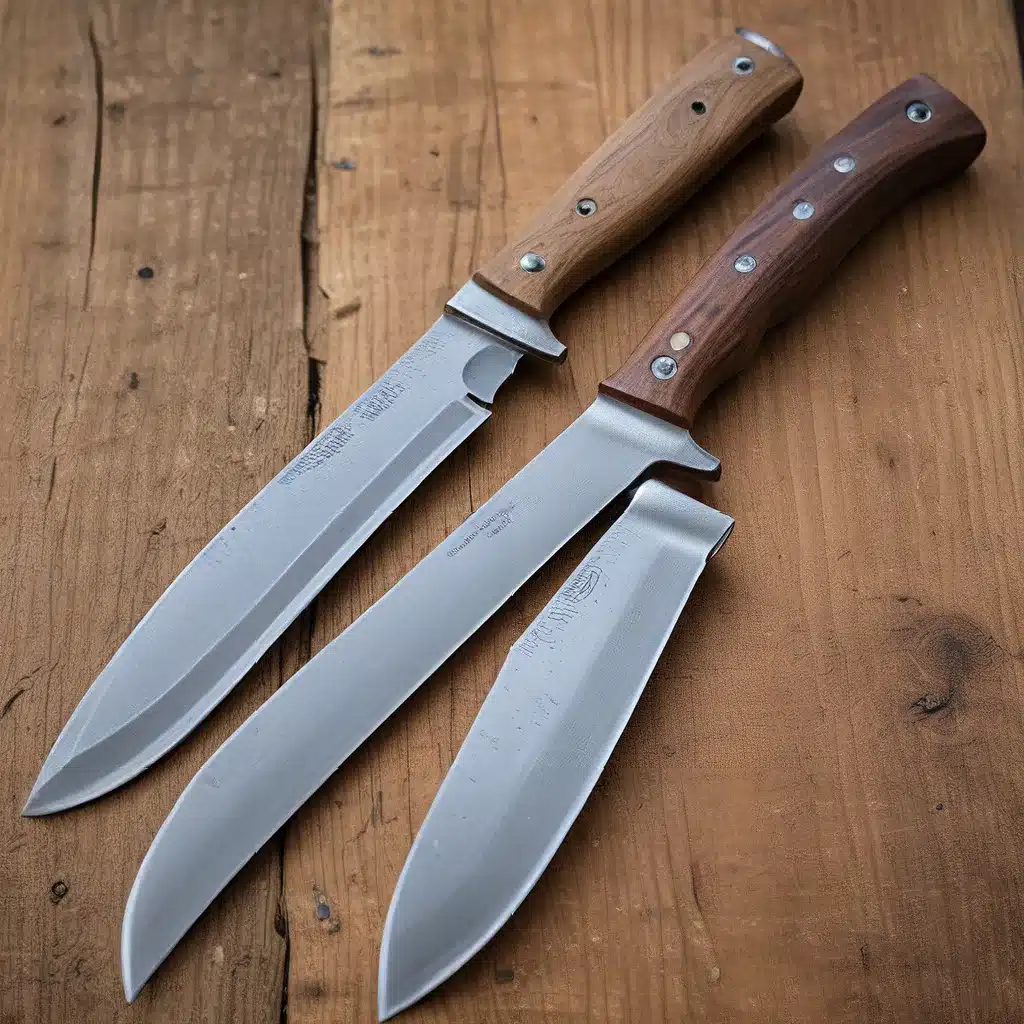
As a passionate home cook and someone who’s been in the knife game for years, I’ve always been fascinated by the age-old debate between forged and stamped knives. It’s a topic that’s sparked countless discussions among chefs, home cooks, and knife enthusiasts alike. And let me tell you, it’s a debate that’s far from black and white.
The Forging Process: Where Art Meets Function
Now, let’s dive into the world of forged knives. These beauties are the result of a meticulous, time-honored process that’s as much an art form as it is a practical necessity. Picture a skilled blacksmith, wielding a hammer and anvil, meticulously shaping and compacting a single bar of high-quality steel. This laborious process not only gives the blade its distinctive shape but also rearranges the steel’s molecules, making it denser, harder, and more durable.
It’s this attention to detail and hands-on approach that sets forged knives apart. The end result is a blade that’s thicker, heavier, and more substantial in the hand. And let me tell you, there’s something undeniably satisfying about the heft and power of a well-crafted forged knife. It’s like wielding a miniature sword, ready to tackle even the toughest culinary tasks.
But don’t let the weight fool you – forged knives are incredibly precise and well-balanced. Their thick, sturdy build means they’re less likely to bend or flex, even when slicing through dense ingredients like squash or pumpkin. And the addition of a bolster, a metal ring between the blade and the handle, provides an extra layer of protection for your fingers, making these knives a pleasure to use.
The Stamping Process: Efficiency and Affordability
On the other side of the spectrum, we have stamped knives. These are the result of a more automated, efficient manufacturing process. Instead of being painstakingly forged, stamped knives are cut from a large sheet of steel using a press or die. This method may not have the same artisanal flair as forging, but it does offer some distinct advantages.
For starters, stamped knives are generally thinner and lighter than their forged counterparts. This can be a major bonus for professional chefs who spend hours upon hours in the kitchen, as the reduced fatigue can make a big difference in their day-to-day work. And let’s be honest, for the average home cook, the slight weight difference is unlikely to be a dealbreaker.
Another benefit of stamped knives is their affordability. The streamlined manufacturing process means they can be produced more quickly and at a lower cost, making them an attractive option for those on a tighter budget. This doesn’t mean they’re necessarily inferior in quality – it just means the focus is more on efficiency than artisanal craftsmanship.
That said, there are some drawbacks to stamped knives. Without the forging process, they may not hold their edge as well as forged blades, and they can be a bit more prone to bending or flexing under heavy use. But with proper maintenance and care, many high-quality stamped knives can still deliver impressive performance.
Comparing the Two: A Matter of Preference and Purpose
So, which one is better – forged or stamped? Well, the truth is, there’s no simple answer. It really comes down to your personal preferences, needs, and the specific tasks you’ll be using the knife for.
If you’re a professional chef or someone who values the heft, power, and precision of a knife, a forged blade might be the way to go. The extra weight and durability can make a real difference when you’re tackling demanding prep work day in and day out.
On the other hand, if you’re a home cook who values affordability and ease of use, a stamped knife might be the better choice. The lighter weight can be a godsend for those who don’t want their hands and wrists to feel the strain after a long cooking session.
And let’s not forget the aesthetic factor. Forged knives often have a distinct, handcrafted look that can be a real showstopper in the kitchen. If you’re the type who appreciates the beauty of a well-made tool, a forged blade might just be the perfect addition to your culinary arsenal.
The Cutting Edge of Innovation
But the story doesn’t end there. As with most things in the modern world, technology has started to blur the lines between forged and stamped knives. Some manufacturers, like Herman Knives, are combining the best of both worlds, using advanced techniques to create precision-engineered stamped blades that rival the performance of their forged counterparts.
And then there are the innovators, like the team at Tojiro, who are merging traditional forging methods with modern machines. By taking advantage of the quality of forged clad steel and the efficiency of stamping, they’re producing knives that seemingly defy the traditional distinctions.
So, as you can see, the forged vs. stamped debate is far from a simple either/or situation. It’s a constantly evolving landscape, where the lines between artisanal craftsmanship and industrial efficiency are being blurred and redrawn.
Making the Right Choice for You
Ultimately, the choice between a forged or stamped knife comes down to your specific needs, preferences, and budget. But don’t be afraid to experiment and keep an open mind. After all, the world of knives is a vast and fascinating one, with new innovations and discoveries around every corner.
And who knows – maybe your next kitchen companion will be a precision-forged blade crafted with the skill of a master blacksmith, or a lightweight, affordable stamped wonder that’s the perfect fit for your culinary adventures. The only way to find out is to dive in, explore, and discover what works best for you.
So, what are you waiting for? It’s time to sharpen your skills, expand your knife knowledge, and embark on a culinary journey that’s sure to be as delightful as it is delicious. Happy cooking, my friends!


